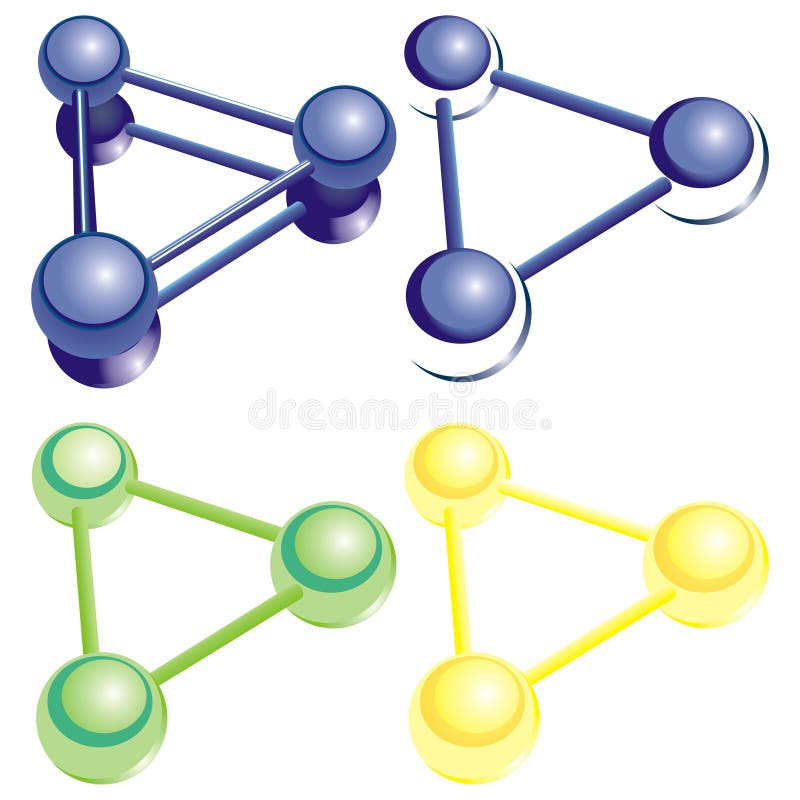In the realms of physics and chemistry, the relationship between atoms and molecules invites both intrigue and complexity. At a cursory glance, one might encounter the question, “Is a molecule in an atom?” This inquiry delves into the foundational principles governing the structure of matter, revealing the intricate dance between the fundamental constituents of the universe. To navigate this profound conundrum, it is essential to elucidate the definitions of atoms and molecules, explore their interrelationship, and consider the broader implications of this distinction within various scientific contexts.
Atoms form the backbone of all matter in the universe. Defined as the smallest units of an element, atoms consist of a dense nucleus, which is composed of protons and neutrons, surrounded by a cloud of electrons. The arrangement of these subatomic particles dictates the chemical properties and behaviors of elements. Elements such as hydrogen, oxygen, and carbon exemplify the diversity of atoms that exist, each embodying unique characteristics that contribute to the vast tapestry of the cosmos.
In contrast, molecules are entities formed when two or more atoms bond together through chemical interactions, specifically covalent or ionic bonding. This union results in a stable structural entity that retains specific properties, differing from those of the individual atoms. For instance, when two hydrogen atoms bond with one oxygen atom, they form water, a molecule with vastly different properties than its constituent elements alone. This distinction underscores the essence of molecular chemistry, wherein the interplay of atoms generates a plethora of substances exhibiting various properties.
Given these definitions, one can assert that a molecule is not contained within an atom. Rather, it is the product of atoms coming together. Molecular formation stems from the need for atoms to achieve greater stability through interactions with one another. The forces that govern these bonds—electrostatic interactions between charged particles—exhibit a unique quintessential nature that bridges the realms of atomic and molecular physics.
On a microscopic level, the dynamics of atomic interactions are orchestrated by the principles of quantum mechanics. Electrons occupy distinct energy levels and orbitals around the nucleus, clouding the precise location of these elementary particles. The covalent bond, one of the primary modes of atomic bonding, forms when two atoms share electrons, creating a shared orbital that enables stability. In stark contrast, ionic bonds occur when electrons are transferred between atoms, leading to the formation of charged ions that attract one another. This behavior signifies a fascinating interplay of forces that is paramount to understanding molecular formation.
The relationships among atoms and molecules are crucial not only in static chemistry but also in dynamic processes such as chemical reactions and thermodynamic interactions. When molecules interact, breaking and forming bonds leads to the transformation of reactants into products, a cornerstone concept in both chemistry and biology. Cellular respiration, for example, encompasses a series of chemical reactions involving molecules derived from atmospheric oxygen and organic carbohydrates. The stoichiometric balance of these reactions highlights the significance of molecular interactions derived from atomic constituents.
Moreover, the macroscopic manifestations of molecular behavior permeate our daily experiences, from the boiling of water to the properties of gases. The ideal gas law, a pivotal physics equation, relates pressure, volume, and temperature of gas molecules, emphasizing how molecular alignment and interaction exert a significant influence on physical states. Thus, the behavior of molecules represents a convergence of both physics and chemistry, where the principles governing atomic structure underpin the complexities of molecular dynamics.
Furthermore, the duality of the particle-wave nature of matter introduces additional layers of fascination in the study of atoms and molecules. Quantum mechanics posits that electrons can be represented as both particles and waves, complicating traditional notions of matter. This duality plays an integral role in molecular orbital theory—a sophisticated model that explains how atomic orbitals combine to form molecular orbitals, revealing that the properties of molecules are influenced by the intricate overlap of atomic states.
Beyond the scientific implications, the inquiry into the relationship of atoms and molecules captivates the human imagination. It underscores the interconnectedness that weaves through the very fabric of existence. Questions surrounding the atomic structure of matter yield profound philosophical inquiries about the nature of reality itself. Concepts such as the existence of multiple universes, the origins of life, and the synthesis of new materials stem from an intrinsic desire to comprehend our surroundings at the most fundamental levels.
In conclusion, the question “Is a molecule in an atom?” serves as a portal to a rich tapestry of scientific exploration and understanding. While it can be definitively answered that a molecule is not contained within an atom, the interrogation of atomic and molecular relationships raises essential questions about the nature of matter, the forces that bind it, and our role as observers within the cosmos. As we further unravel these complexities, we not only enhance our scientific literacy but also cultivate an appreciation for the wonders of the universe, beckoning future generations to continue the pursuit of knowledge in both physics and chemistry.












